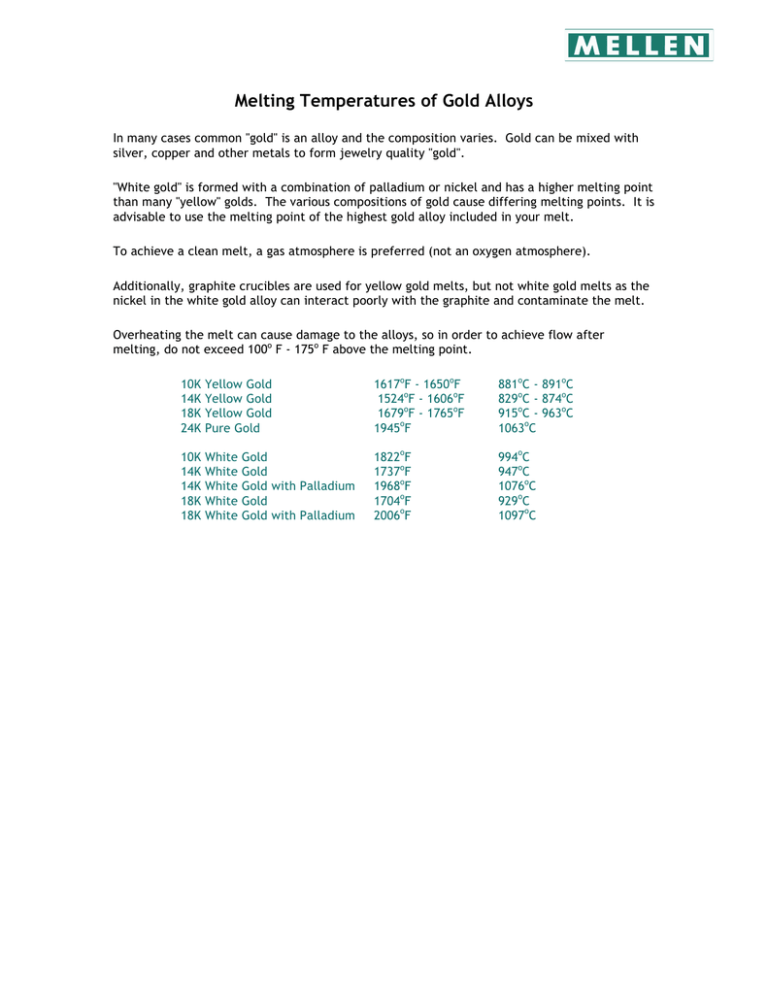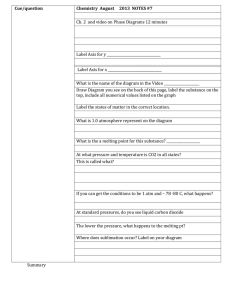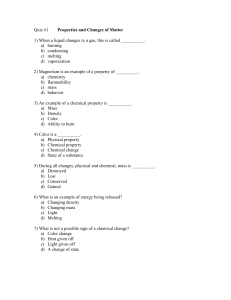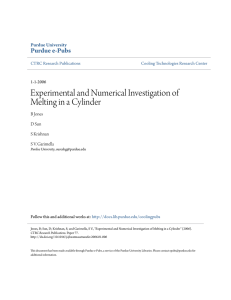Melting Temperatures of Gold Alloys
advertisement

Melting Temperatures of Gold Alloys In many cases common "gold" is an alloy and the composition varies. Gold can be mixed with silver, copper and other metals to form jewelry quality "gold". "White gold" is formed with a combination of palladium or nickel and has a higher melting point than many "yellow" golds. The various compositions of gold cause differing melting points. It is advisable to use the melting point of the highest gold alloy included in your melt. To achieve a clean melt, a gas atmosphere is preferred (not an oxygen atmosphere). Additionally, graphite crucibles are used for yellow gold melts, but not white gold melts as the nickel in the white gold alloy can interact poorly with the graphite and contaminate the melt. Overheating the melt can cause damage to the alloys, so in order to achieve flow after melting, do not exceed 100o F - 175o F above the melting point. 10K 14K 18K 24K Yellow Gold Yellow Gold Yellow Gold Pure Gold 1617oF - 1650oF 1524oF - 1606oF 1679oF - 1765oF 1945oF 881oC - 891oC 829oC - 874oC 915oC - 963oC 1063oC 10K 14K 14K 18K 18K White White White White White 1822oF 1737oF 1968oF 1704oF 2006oF 994oC 947oC 1076oC 929oC 1097oC Gold Gold Gold with Palladium Gold Gold with Palladium





